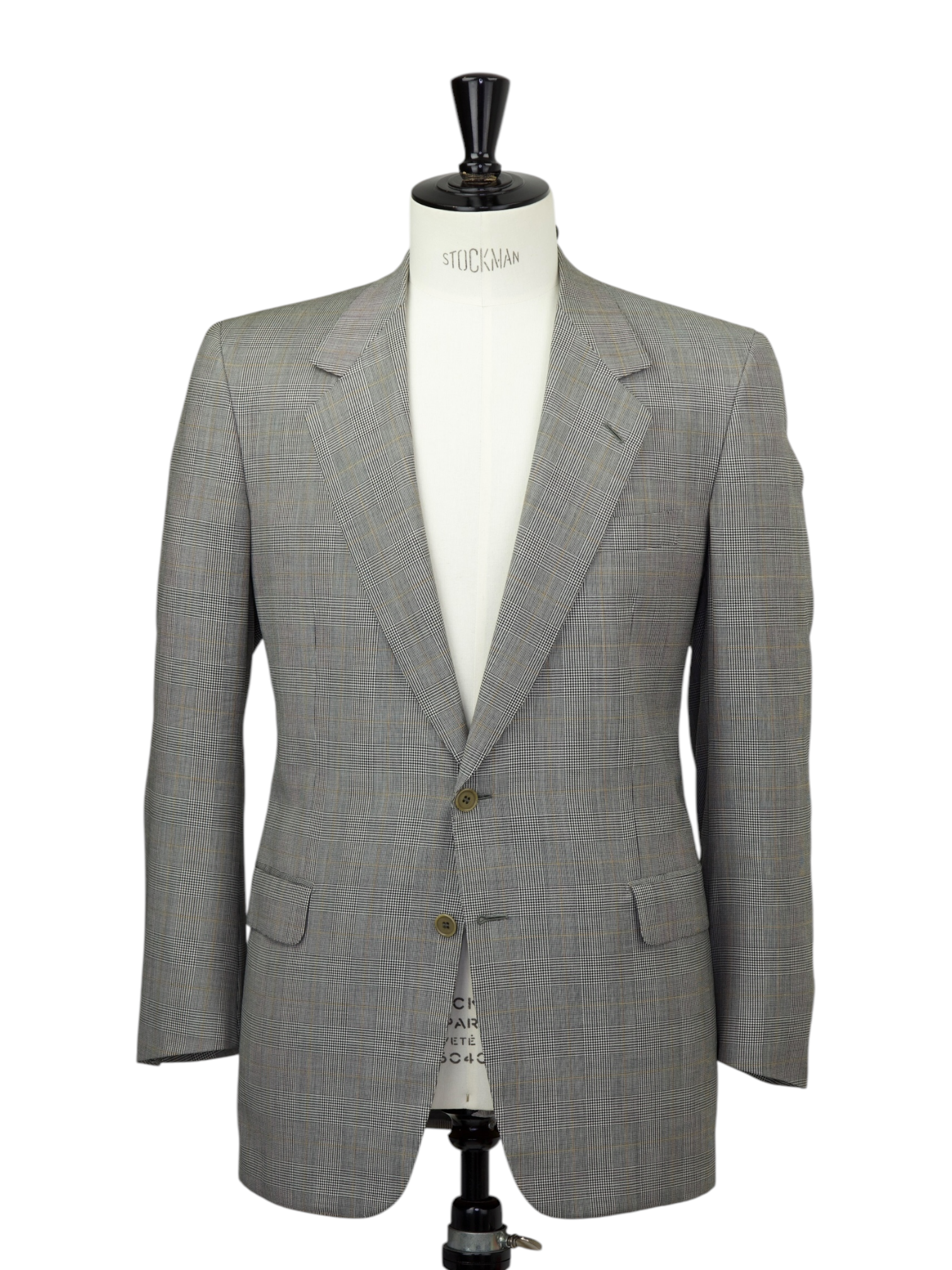
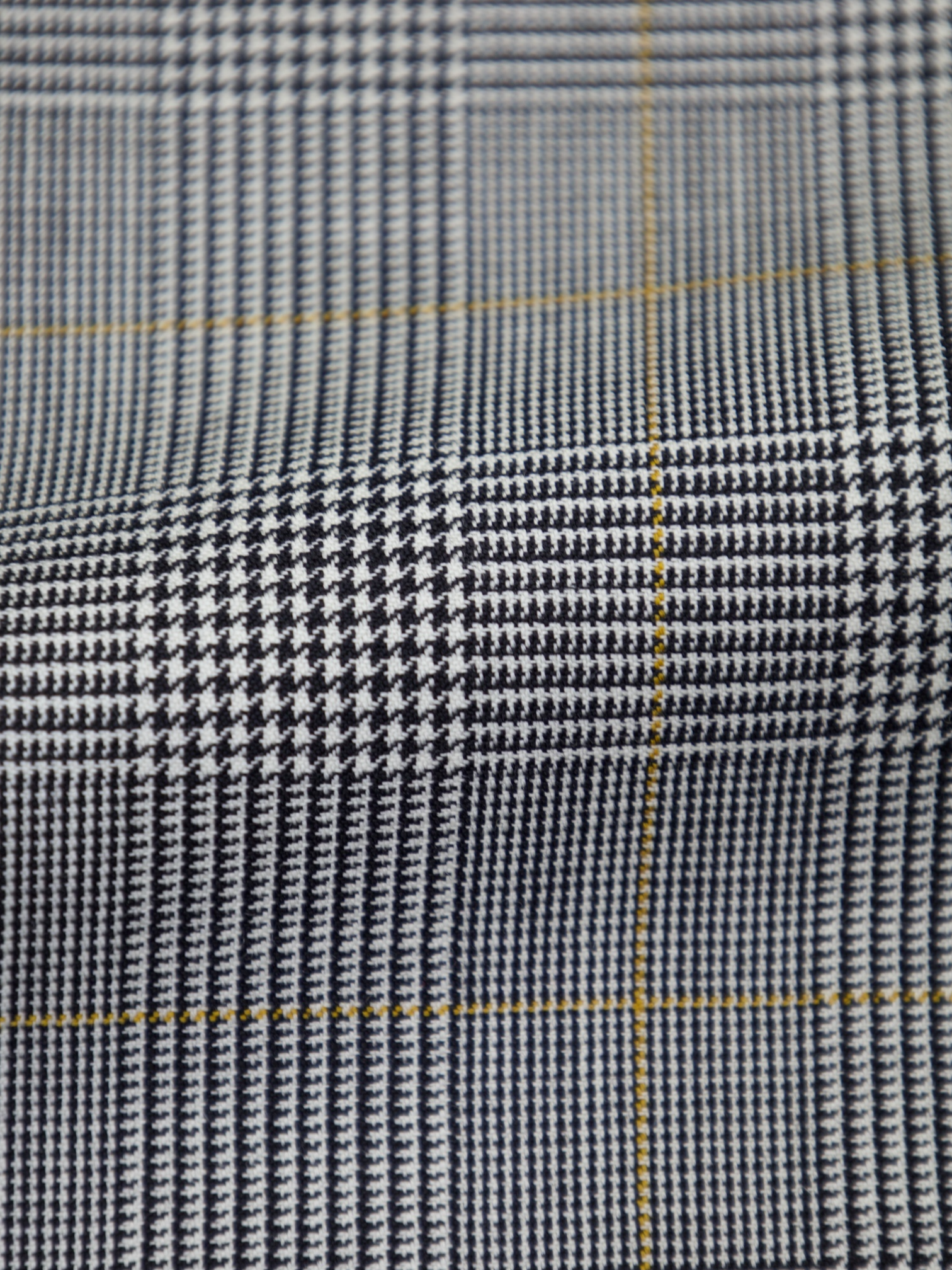
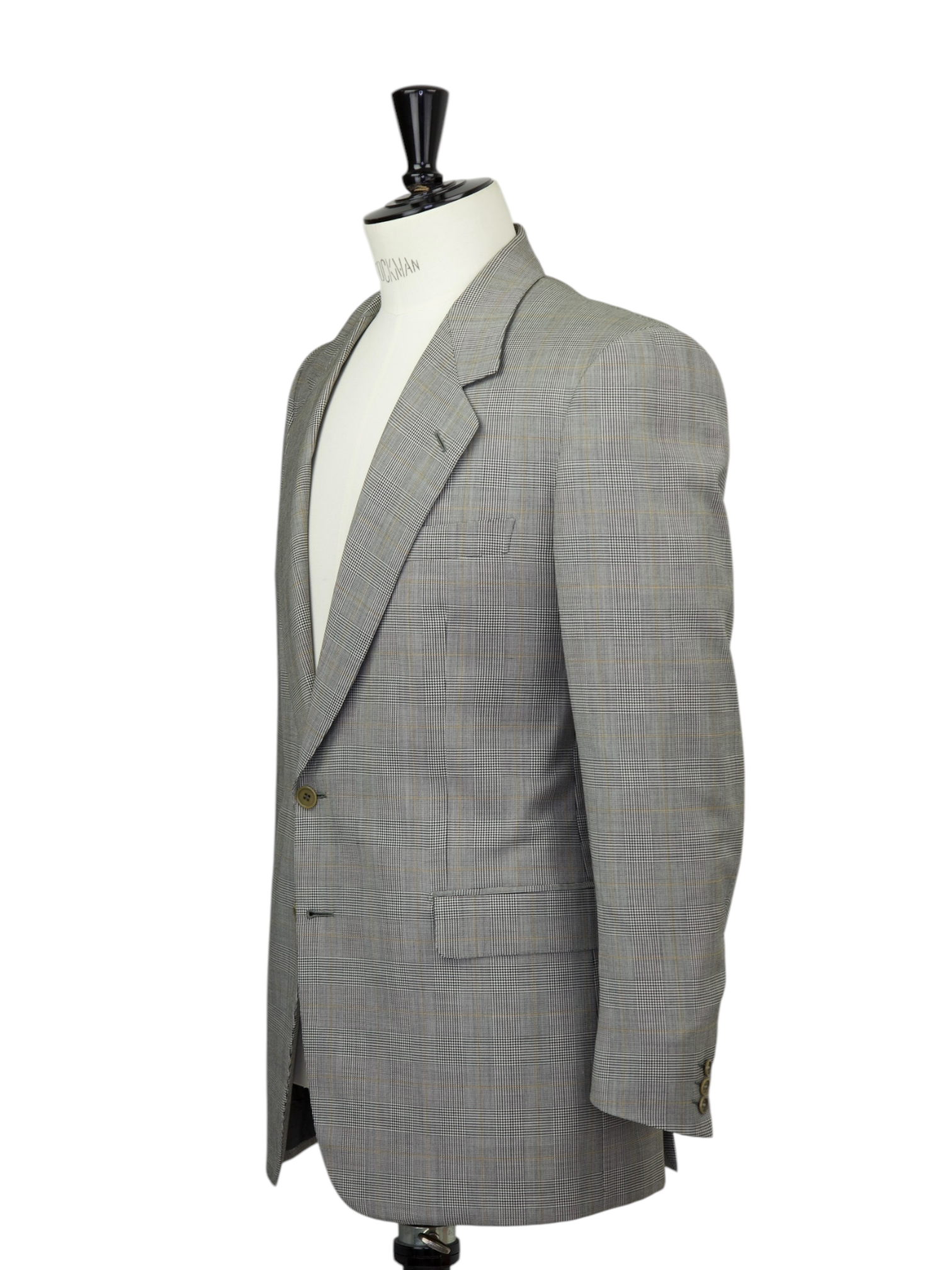
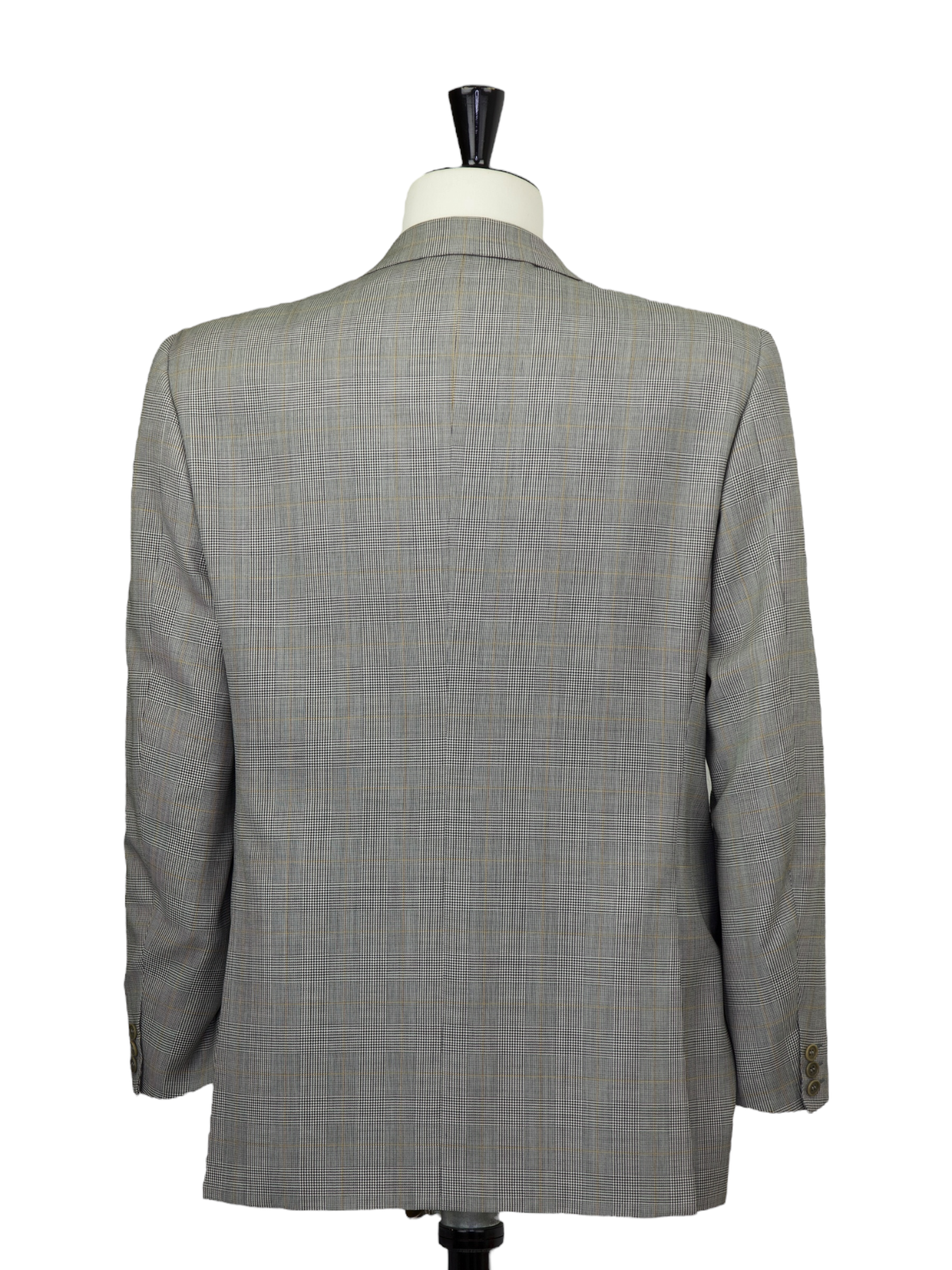
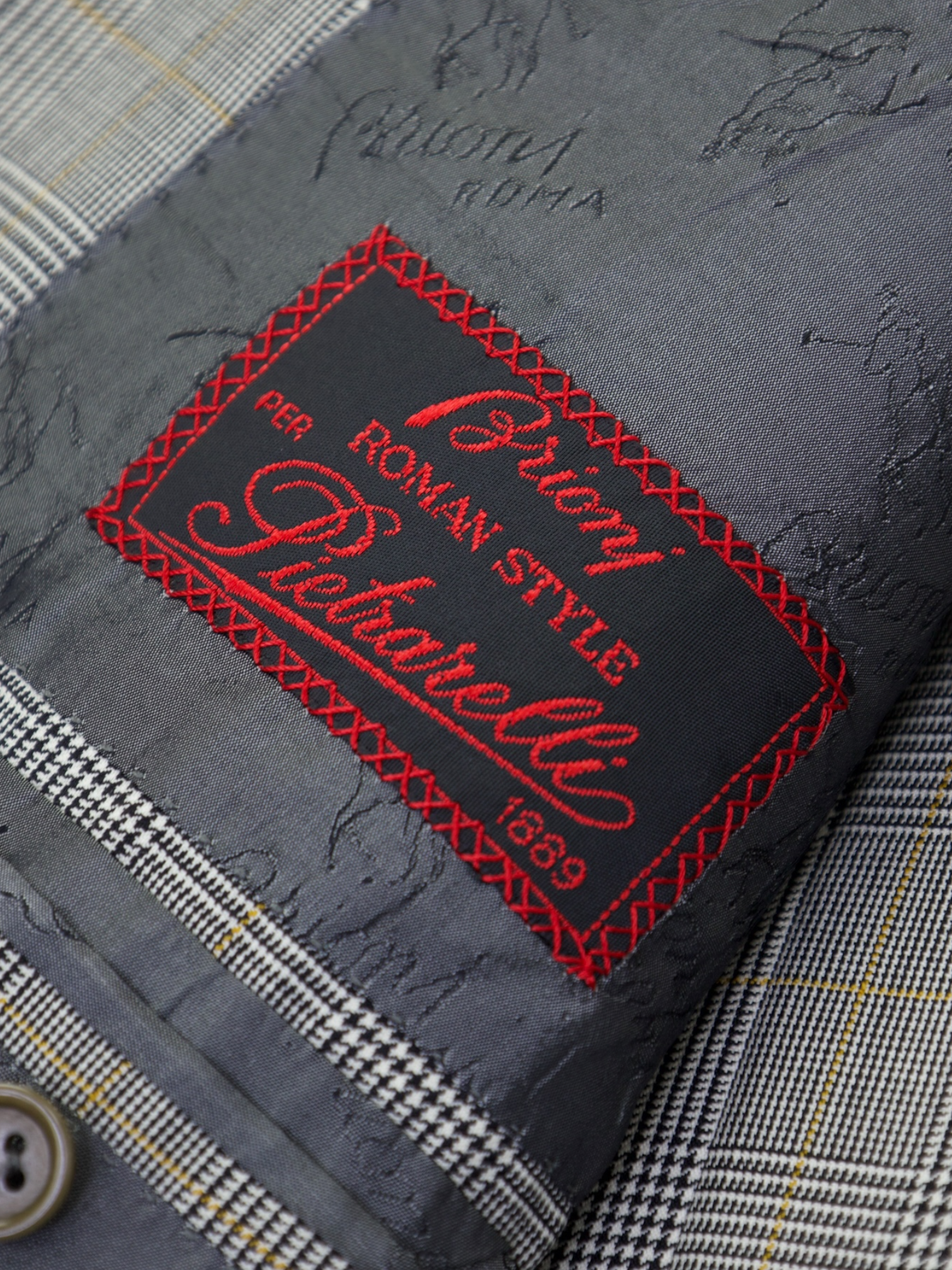
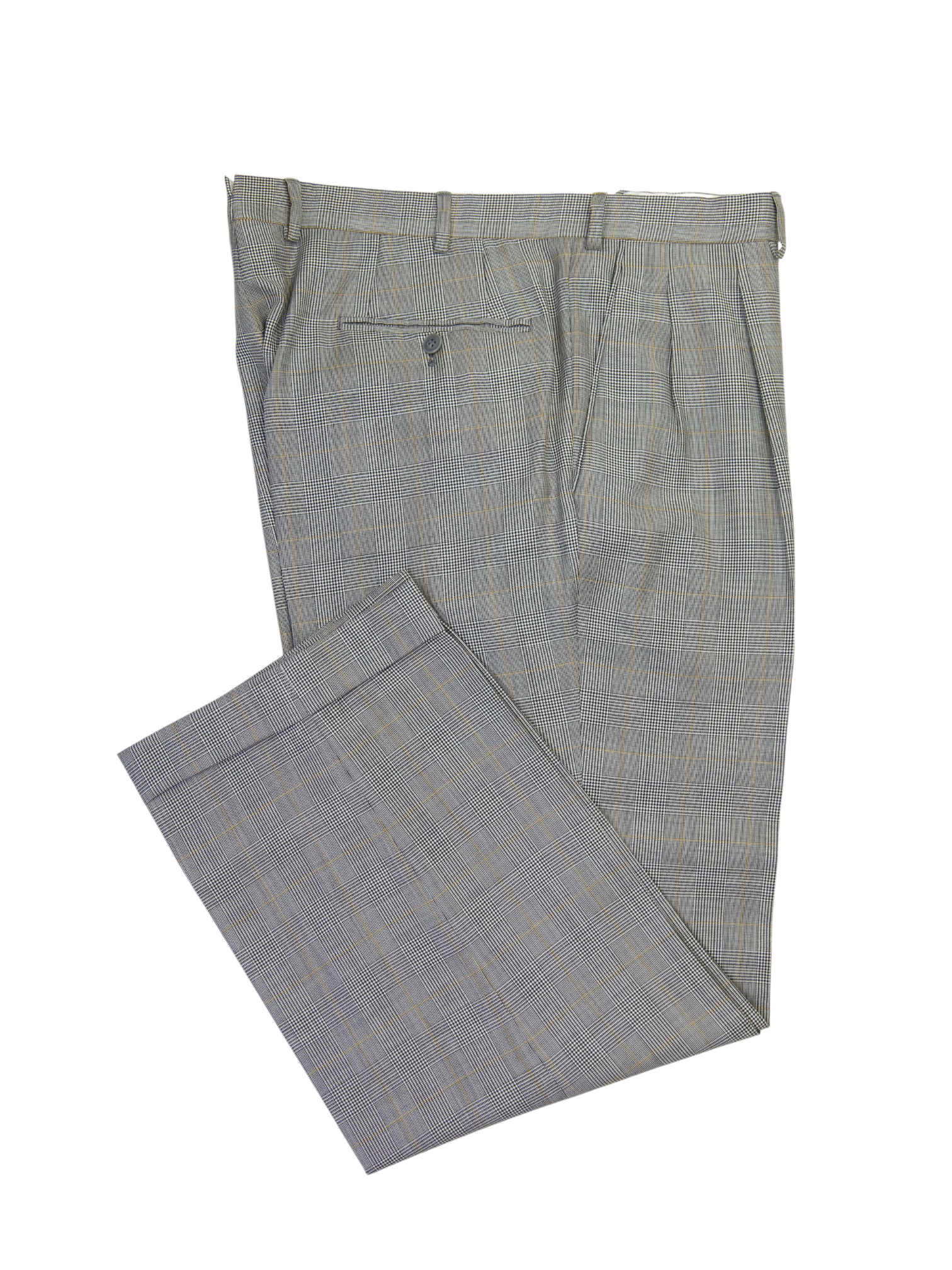
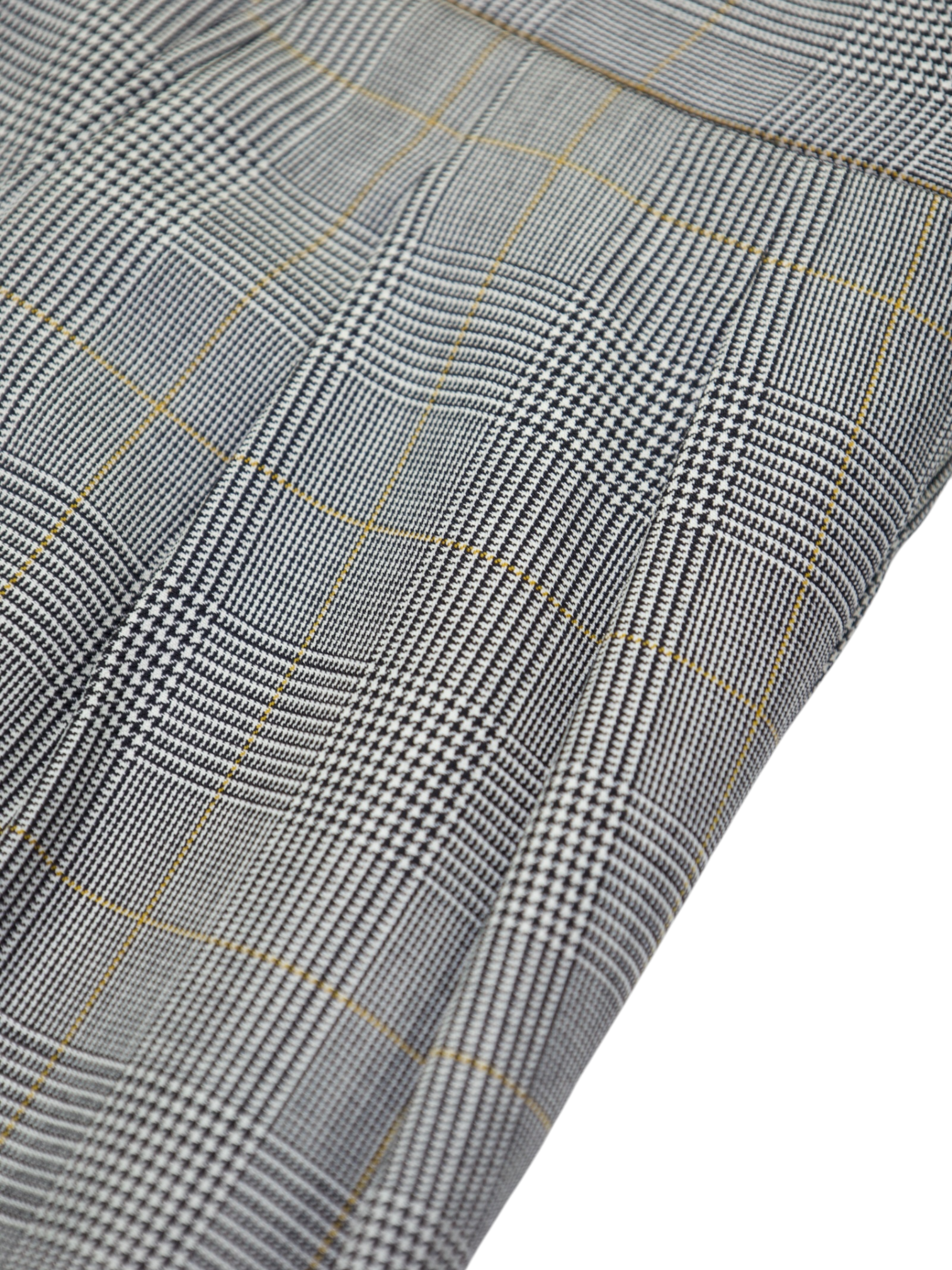
Brioni Vintage Grey Wool Prince of Wales Check Suit
54 IT / 44 US / Extra Large
Discover the Brioni Vintage Grey Wool Prince of Wales Check Suit, a distinguished expression of classic menswear infused with Italian sophistication. Tailored from fine grey wool, this suit is adorned with a timeless Prince of Wales check pattern, offering a refined yet versatile aesthetic. The single-breasted jacket features a low-gorge notch lapel, two-button closure, and double vents for ease of movement, while its fully canvassed and lined construction provides a structured yet natural fit. Paired with impeccably cut flat-front trousers, this ensemble transitions effortlessly from boardroom to formal occasions.
Handmade in Italy, this Brioni suit embodies the brand’s commitment to artisanal excellence. Each detail, from the precision-aligned check pattern to the hand-finished lapels, reflects hours of meticulous craftsmanship. The full canvas construction enhances the drape and longevity, while the soft shoulders and subtle tapering highlight Brioni’s signature emphasis on comfort and silhouette. Perfect for the modern gentleman with an appreciation for enduring style, this suit is a testament to sartorial heritage. Discover the elaborated sartorial details below.
Composition: 100% Wool
Color: Grey
Pattern: Prince of Wales Ruit
See how we measure our sartorial items
Discover the customization possibilities by visiting our tailor alteration guide
Gratis verzending voor bestellingen boven de 200€ in Nederland, 500€ in de EU en 1000€ buiten de EU.
Verzendkosten voor bestellingen onder de minimumprijs zijn afhankelijk van je land.
General Note: While we inspect each item to ensure its quality, please note that minor imperfections may be present due to the preloved nature of the garments. We strive to represent every item accurately, but subtle signs of wear may sometimes go unnoticed. We appreciate your understanding and commitment to sustainable luxury.
Opties kiezen







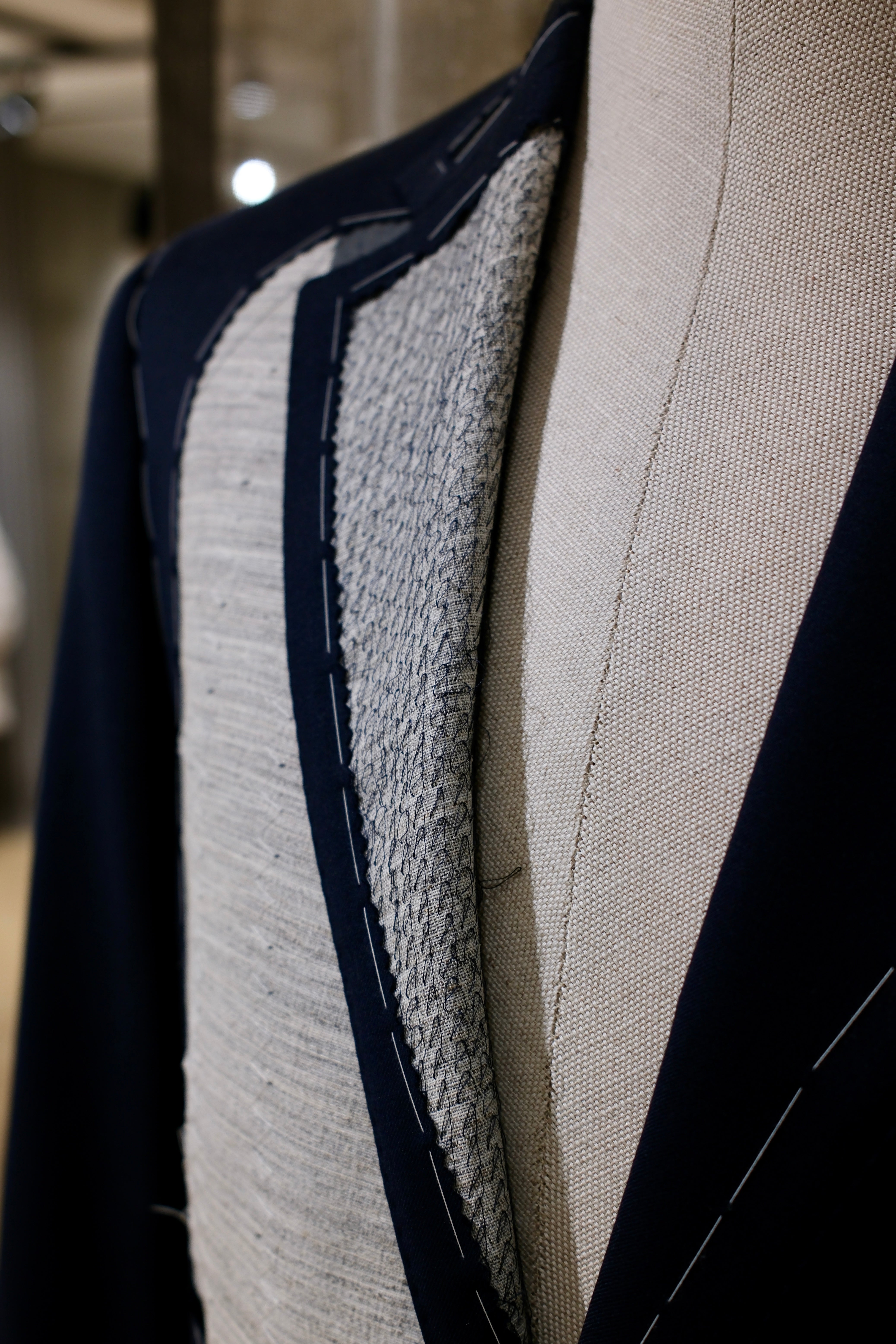
Ontdek de
Sartoriale Details

Full Canvas Constructie
Een sartoriale jas - of mantel - heeft een tussenvoering nodig die helpt om de vorm te geven en het te modelleren. Canvas geeft het item een op maat gemaakte en ambachtelijke uitstraling. Kortom, het brengt leven in het kledingstuk. Technisch gezien is canvas gemaakt van paardhaar, wol, mohair of kamelenhaar. Het kan ook een mix van deze materialen zijn, met variërende dikte en gewicht. De canvas wordt aan de jas gestikt, vaak met de hand, waardoor de canvasstukken 'zweven' tussen de binnen- en buitenstof. Dit geeft de jas extra flexibiliteit. De canvas loopt van de bovenste delen helemaal door tot het einde van de jas. Nadat je je canvasjas een tijd hebt gedragen, zal deze beginnen de vorm van je lichaam aan te nemen en er ongelooflijk natuurlijk uitzien.
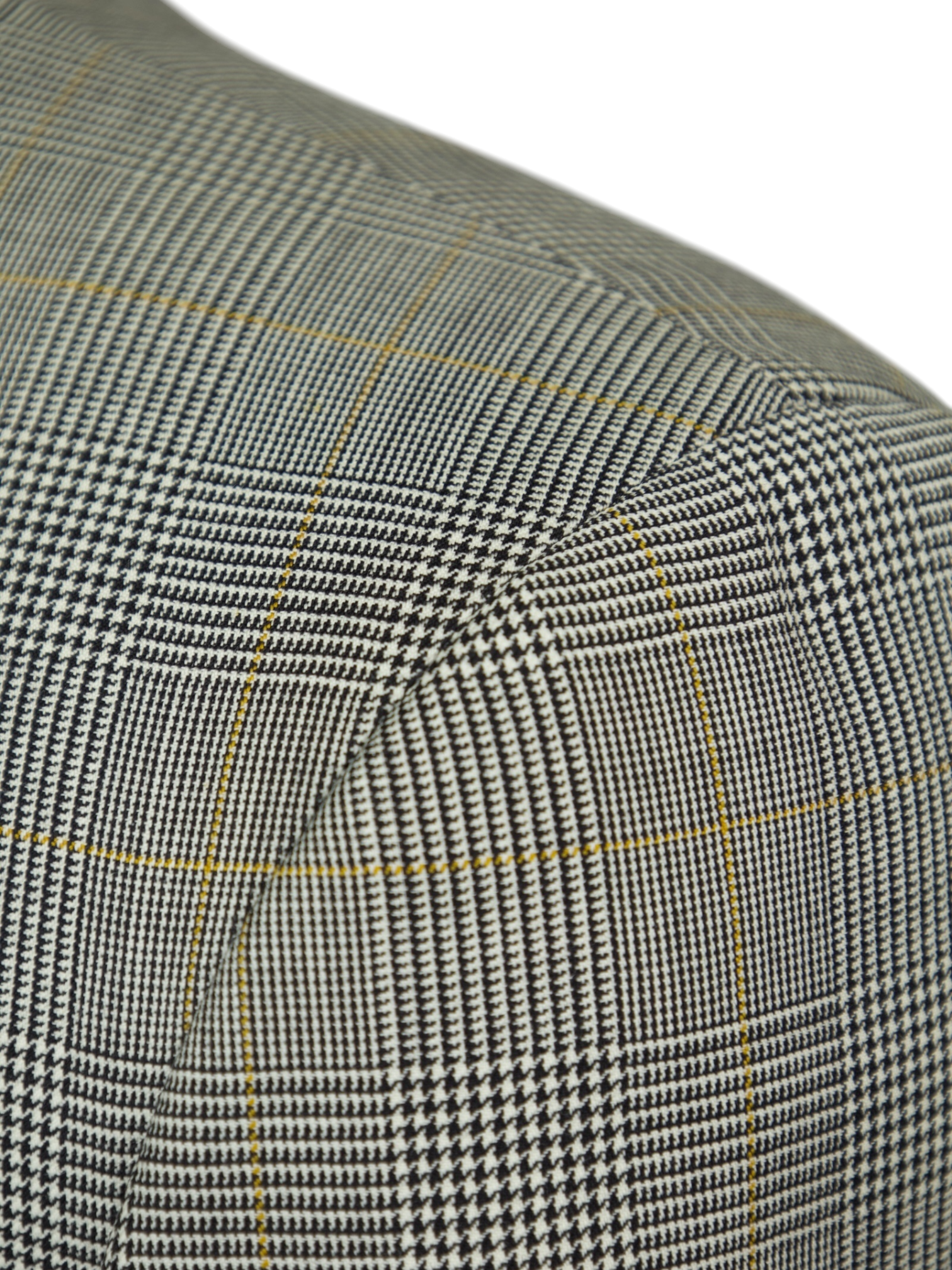
Romeinse Schouder Stijl
Gekenmerkt door een strak, krachtig silhouet, heeft de Romeinse stijl zijn oorsprong in de militaire en paardrijstijl op Savile Row. Terwijl de sterk gestructureerde, militair geïnspireerde pakken met sterke schouders en stijf canvas passend waren voor Engelse edelen, was de ingetogen stijl geen adequate weerspiegeling van de Italiaanse levensstijl. Naarmate het Italiaanse kleermakersvak tot bloei kwam, begonnen echter verschillende stijlen zich te ontwikkelen. In Napels werd de ongestructureerde, grillige Neapolitaanse stijl dominant. In Rome, waar Brioni werd geboren, evolueerde de stijl subtieler. De gestructureerde Britse stijl werd volumineuzer, meer lichaamsbewust en vrij stromend gemaakt zonder te veel van de kenmerkende vorm van Savile Row te verliezen.
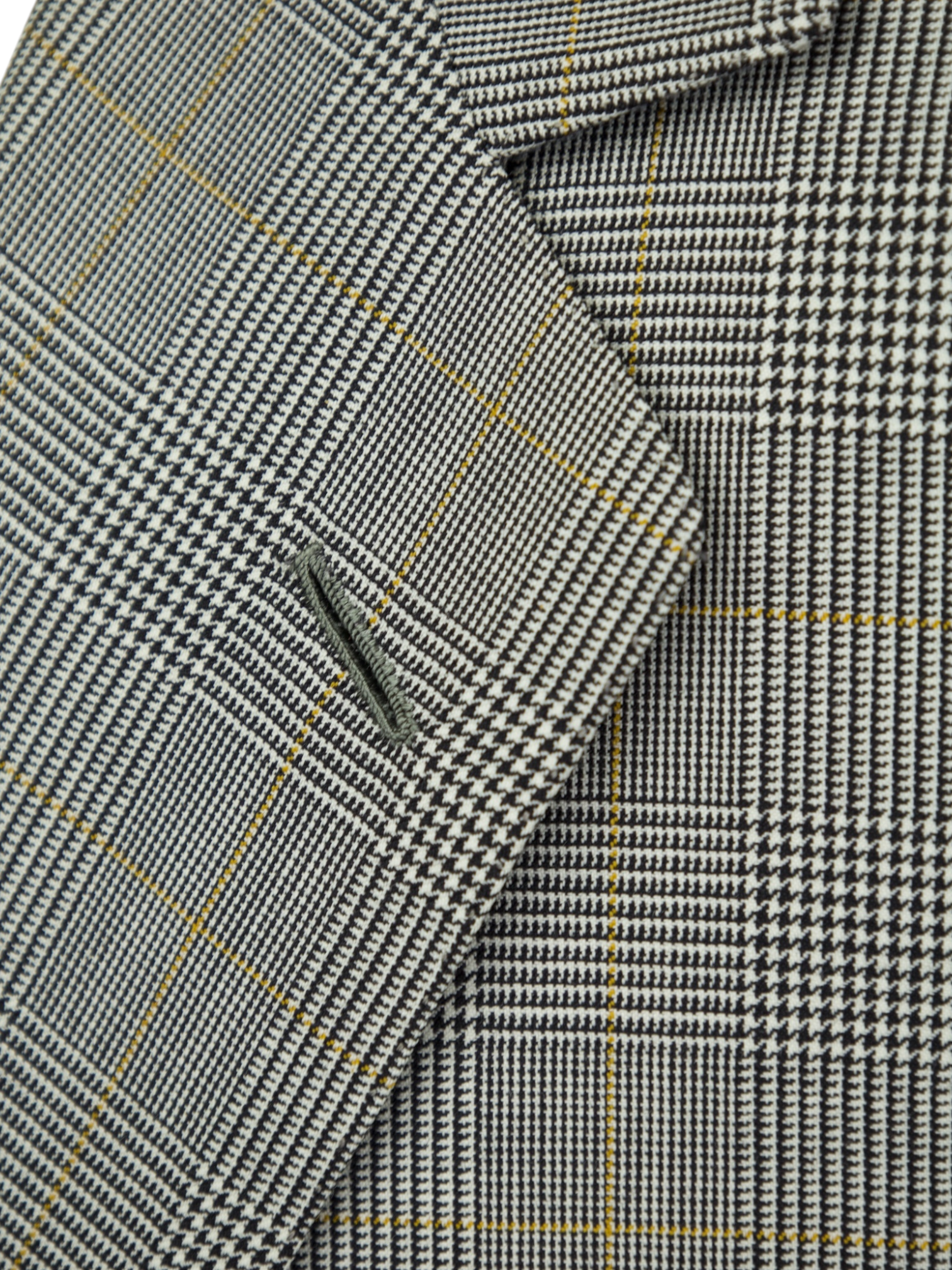
Handgemaakt Knoopsgat
Handgemaakte knoopsgaten worden gemaakt met behulp van een ketting van geknoopte lussen, genaamd festonsteken, die ze sterk en visueel onderscheidend maken. Het duurt ongeveer vijf seconden om met een machine een normaal knoopsgat te naaien - een enkel handgemaakt knoopsgat kost ongeveer 10 minuten om te naaien.
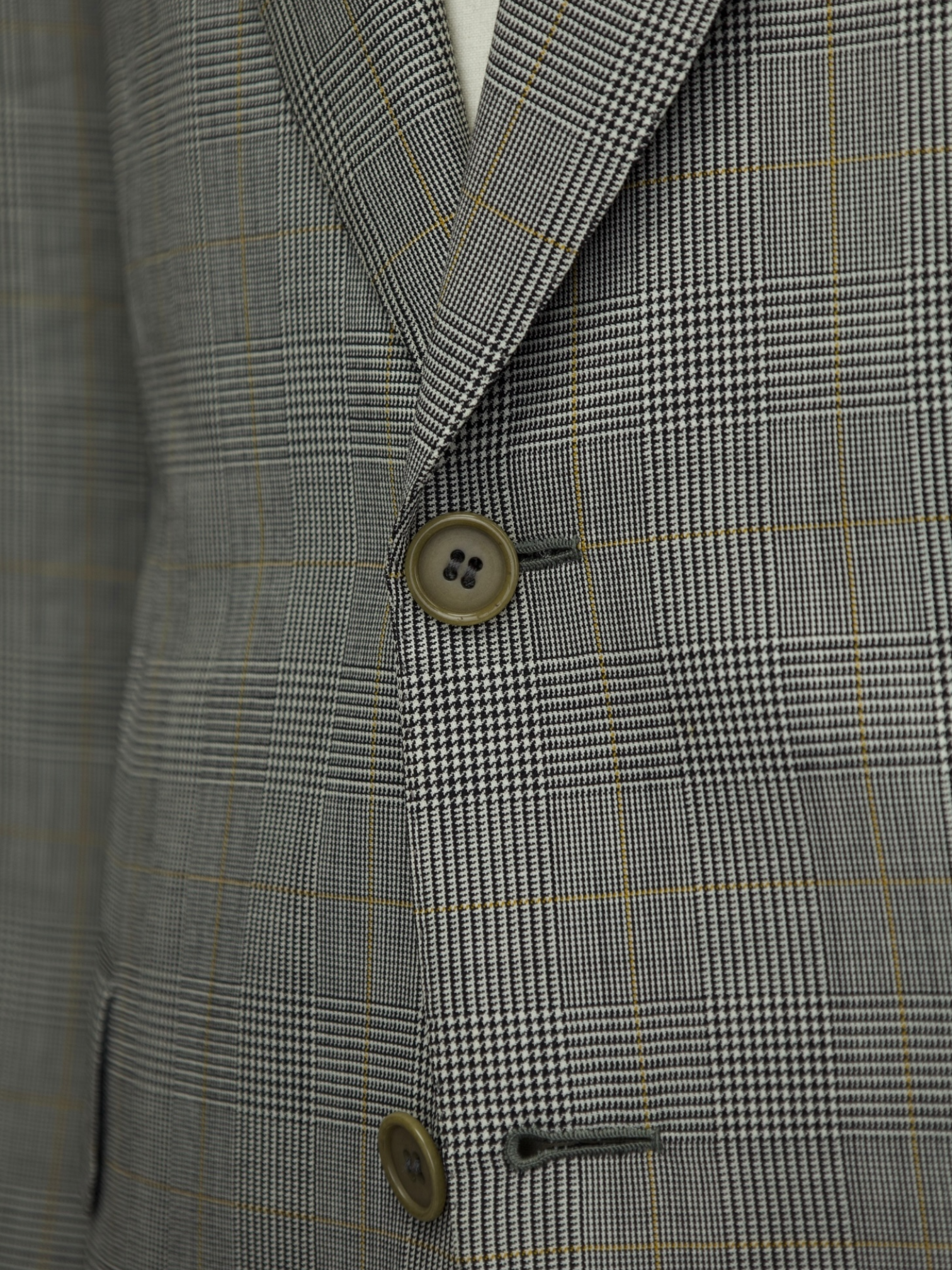
Tweeknoops Sluiting
Het jasje heeft een sluiting met twee knopen waardoor het profiel strak blijft.
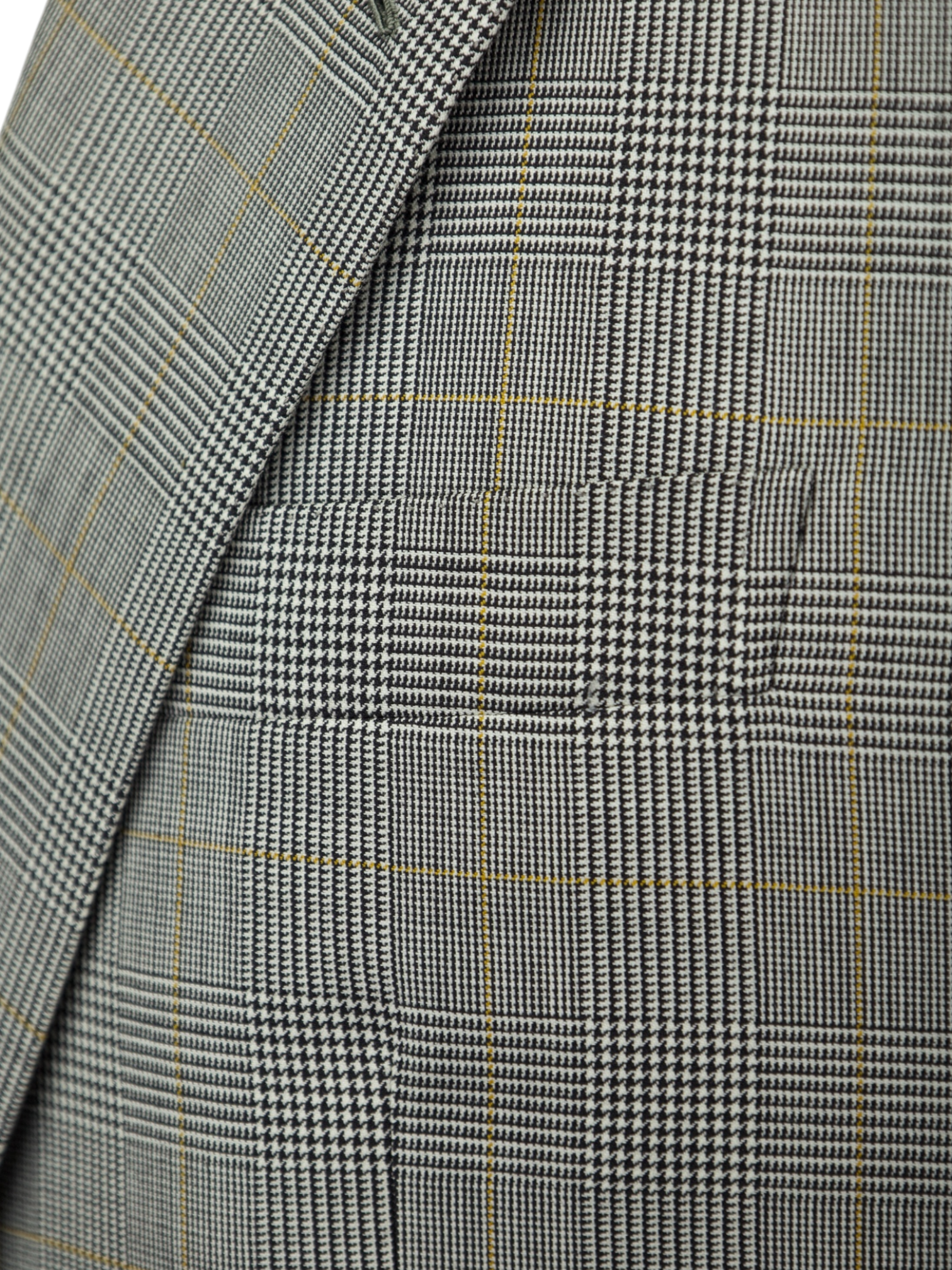
Borstzak - Afgeronde Paspelzak
Ook bekend als 'barchetta', Italiaans voor 'bootje', wordt het zo genoemd omdat deze zak zweeft op de borst, lichtjes schuin omhoog, net als de boeg van een zeilboot. Deze zakken echoën de levendige rol van een revers die de veerkracht van canvas en natuurlijke wol draagt, in tegenstelling tot machinaal gemaakte borstzakken die een meer platte, rechthoekige vorm hebben en minder leven.
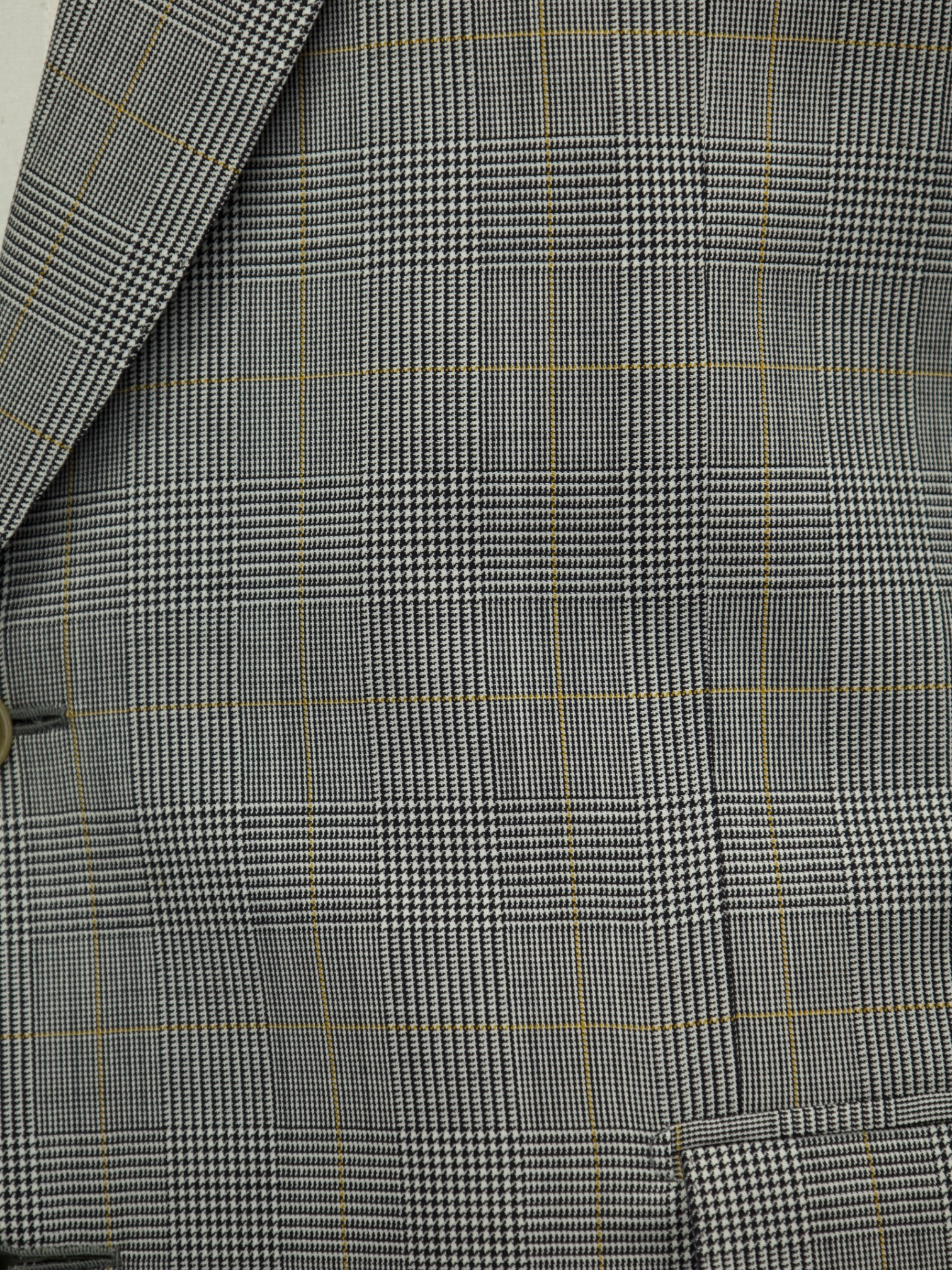
Naden
De kleermaker voegt twee figuurnaden toe - denk aan ze als ingeknepen naden - om ervoor te zorgen dat het lichaam van het jasje een slank silhouet krijgt. Het proces, genaamd "mezzo punto riprese", wordt volledig met de hand uitgevoerd.
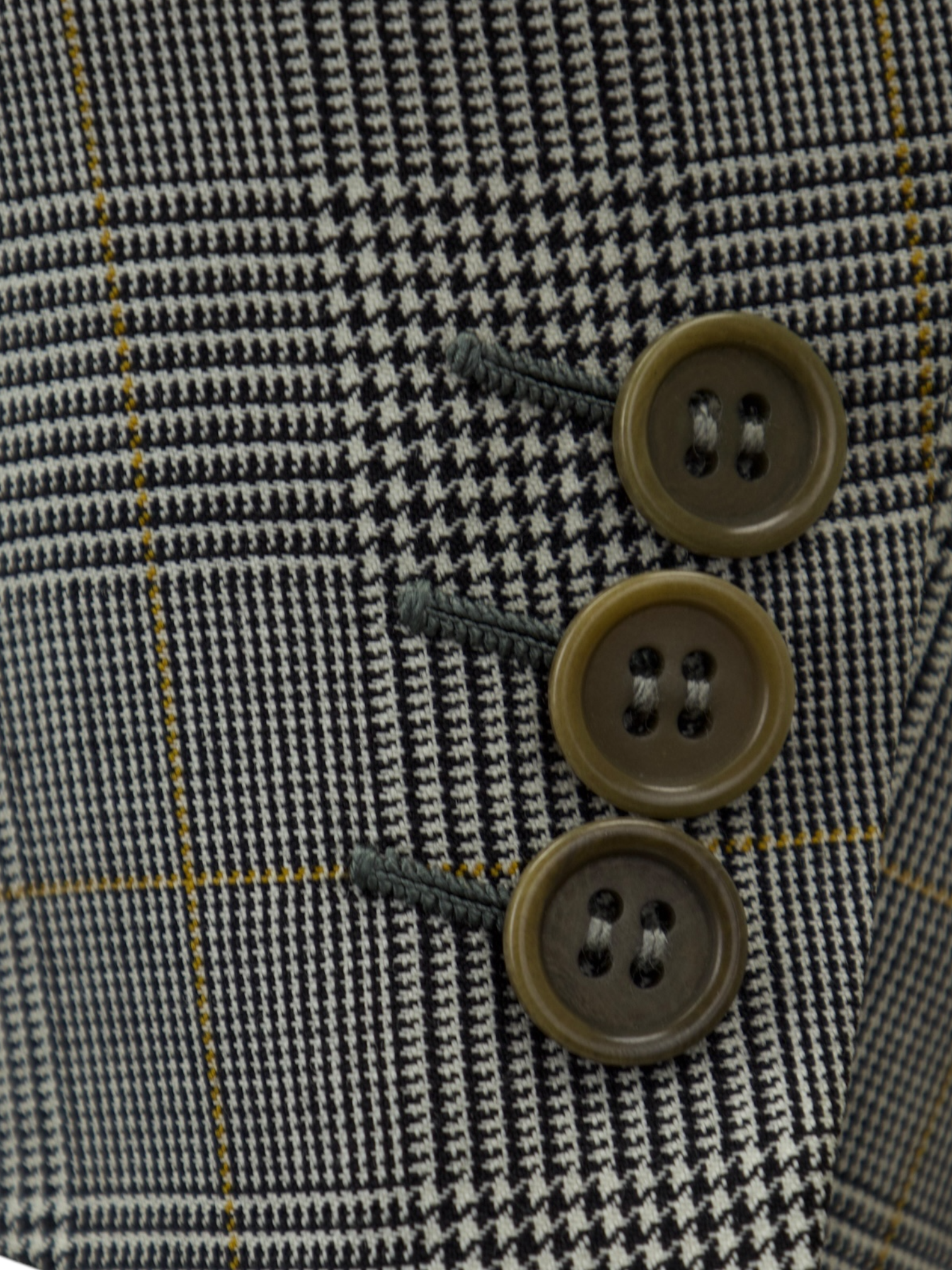
Hoornen Knopen
Hoornen knopen worden gewaardeerd om hun kwaliteit. Ze zijn gemaakt van het beste echte hoornmateriaal, wat de uitstraling van het pak verbetert. En omdat ze zo sterk zijn, hoef je je geen zorgen te maken dat ze barsten of breken.
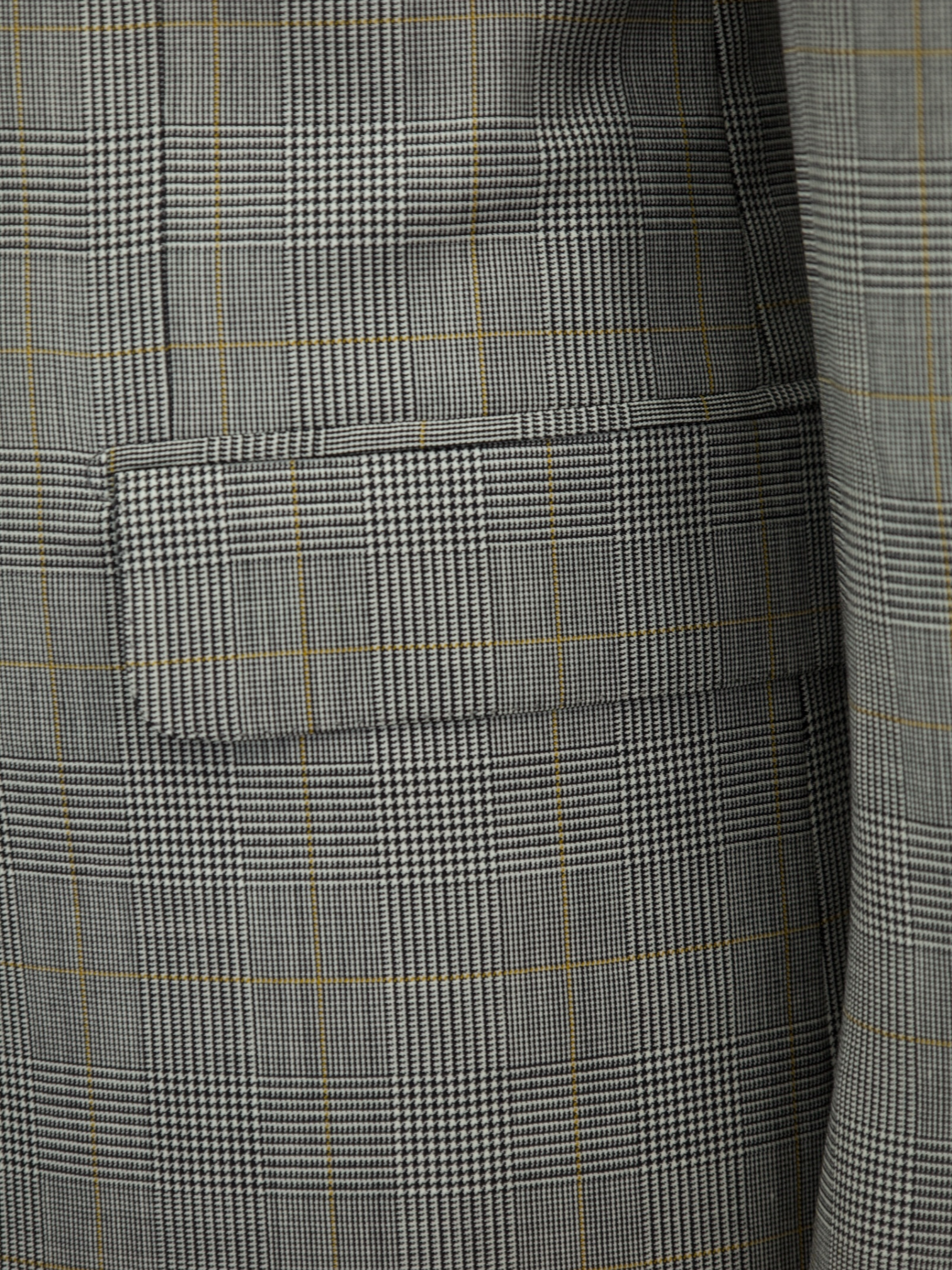
Klepzakken
Dit was oorspronkelijk bedoeld om te voorkomen dat vuil in de jaszakken terechtkomt wanneer deze op het platteland wordt gedragen. Klepzakken bevinden zich min of meer in het midden wat betreft formaliteit: ze zijn een voor de hand liggende keuze voor zakelijke pakken, maar ze kunnen ook voorkomen op blazers als eerbetoon aan hun informele oorsprong.
de details van
de broek
Double Pleated Front
Double-pleat trousers are all about classic elegance. They were a staple in the 1930s and 1940s, an era known for its fuller, more comfortable styles. With two pleats, these pants provide extra room, especially around the hips and thighs, making them great for formal settings. They bring to mind the sophisticated styles of Hollywood icons like Cary Grant, who wore them with effortless charm. Even though slimmer fits have become more popular, double pleats remain appealing for those who appreciate traditional tailoring and timeless style.
Belt Loops
Belt loops are the most common type of waistband found on trousers, providing the option to wear a belt for both style and practicality. Typically spaced evenly around the waistband, belt loops are a versatile feature that can accommodate a wide range of belt styles and sizes. This traditional waistband design is found in everything from casual jeans to formal dress pants, making it a timeless and adaptable option for any wardrobe. Belt loops offer the flexibility to customize your look while ensuring a secure fit.
Turn-Up (Cuffed) Hem
The turn-up hem, or cuffed hem, is a classic style where the fabric at the bottom of the trousers is folded outward to create a visible cuff. This style originated with Edward VII in the late 19th century, who had his trousers tailored with cuffs to prevent them from getting muddy, sparking a trend among the fashionable elite. In the 1920s and 1930s, turn-ups became a symbol of wealth and sophistication, as having extra fabric was seen as a luxury. This association continued after World War II when wearing turn-ups subtly indicated affluence in an era of fabric rationing. Today, turn-up hems are a nod to their historical roots, offering a touch of classic elegance and enhancing the overall appearance of formal and tailored trousers.

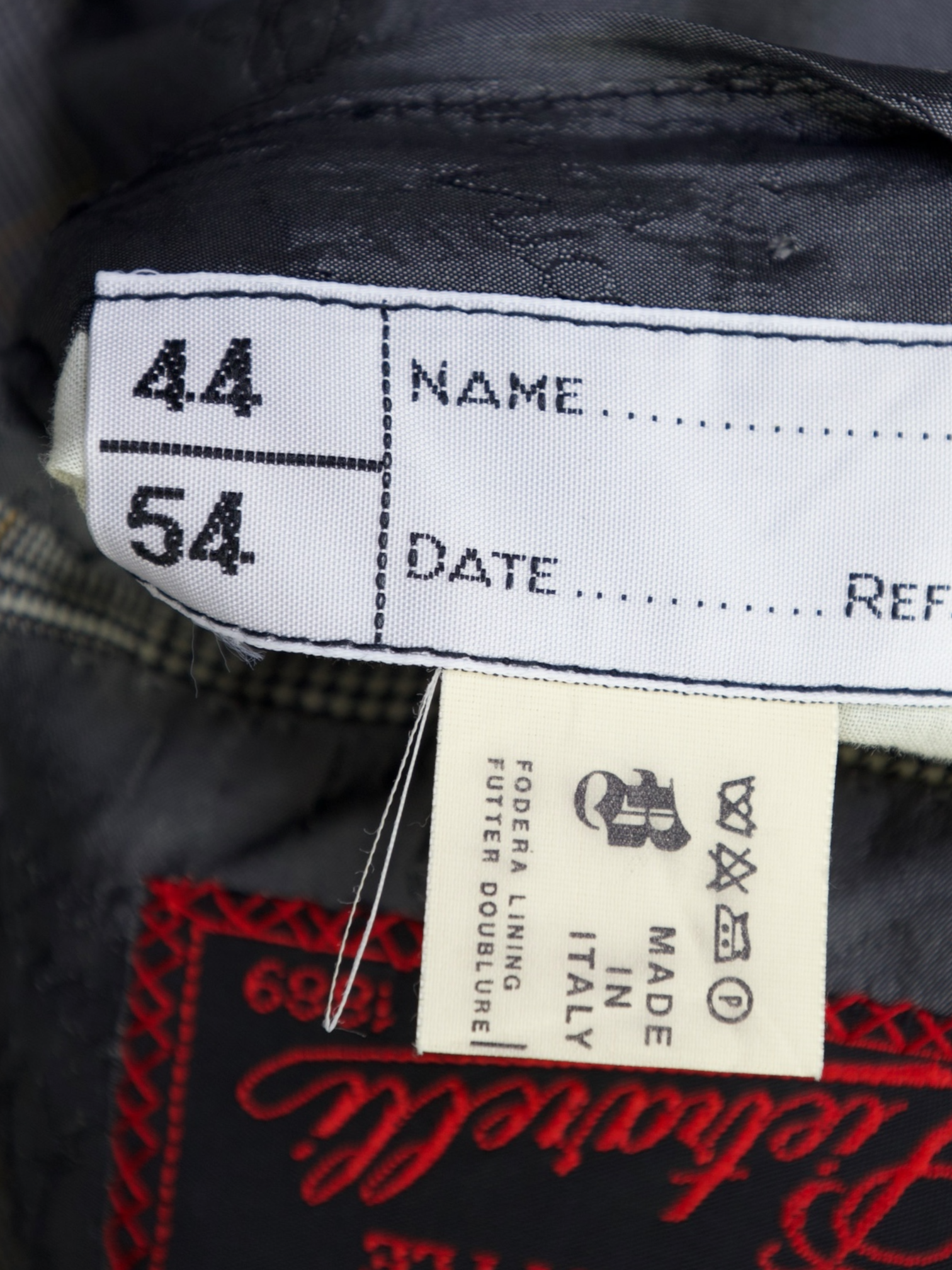
maat
54 IT / 44 US / Extra Large


 Curator's Description
Curator's Description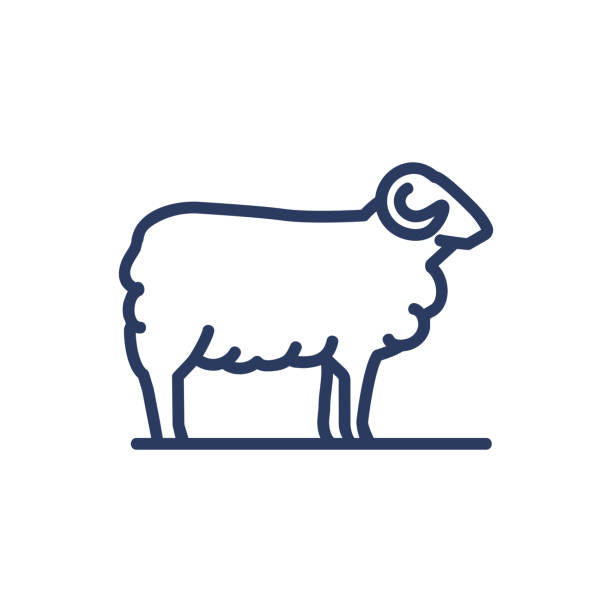 Materialen
Materialen